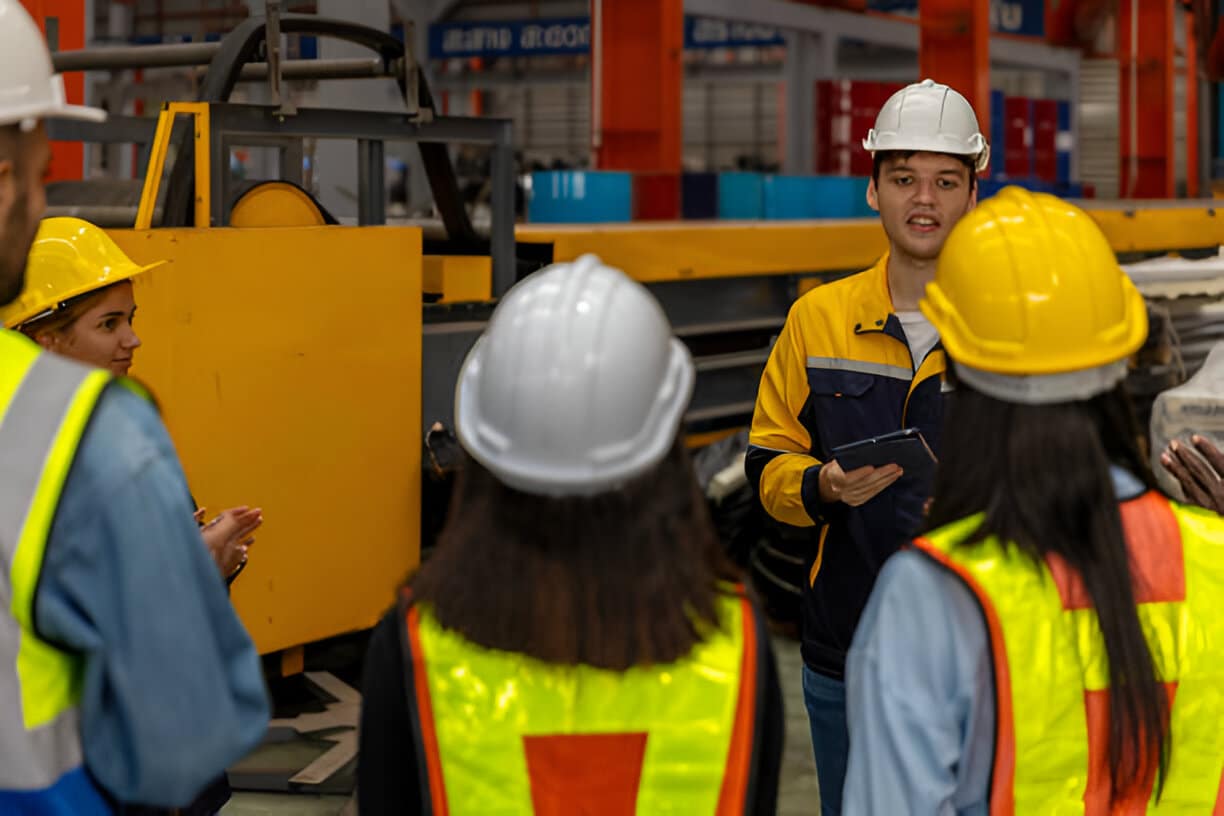Why Every Workplace Needs Manual Handling Training

In workplaces across Australia, manual handling is an integral part of daily operations. Whether lifting, pushing, pulling, or carrying, these tasks are critical to ensuring business efficiency and productivity. However, without proper training, manual handling can pose significant risks to the health and safety of employees. This is where Manual Handling Training becomes indispensable.
This article explores why every Australian workplace needs manual handling training, highlighting the benefits for both employers and employees and how you can take the next steps by contacting us to enhance your workplace safety standards.
Understanding Manual Handling Training
Manual handling encompasses any task involving the movement of objects by human effort. This includes lifting boxes in a warehouse, moving equipment on a construction site, or even rearranging office furniture. While these tasks may seem straightforward, improper techniques can lead to musculoskeletal injuries, chronic pain, and decreased workplace efficiency.
According to Safe Work Australia, musculoskeletal disorders account for a large proportion of workplace injuries. These injuries not only impact the wellbeing of employees but also lead to increased absenteeism, workers’ compensation claims, and productivity losses for employers.
Key Risks in Manual Handling:
- Lifting or handling heavy objects without proper support.
- Repetitive tasks causing strain over time.
- Poor posture during movement.
- Sudden or awkward movements leading to injury.
Effective Manual Handling Training equips employees with the knowledge and skills to mitigate these risks, ensuring a safer, more productive workplace.
Benefits of Manual Handling Training for Australian Workplaces
- Enhancing Workplace Safety
Safety is paramount in any workplace. Manual handling training provides employees with practical techniques to handle tasks safely, reducing the likelihood of injuries. For example, workers learn how to assess loads, use mechanical aids, and adopt correct postures during lifting or carrying.
- Complying with Australian Work Health and Safety (WHS) Regulations
Australia has stringent WHS laws that mandate employers to provide a safe working environment. Offering manual handling training ensures compliance with these regulations, protecting your organisation from legal liabilities.
- Reducing Workplace Injuries and Associated Costs
The financial implications of workplace injuries can be significant. Costs include medical expenses, lost productivity, and increased insurance premiums. By implementing manual handling training, businesses can significantly reduce these costs by preventing injuries before they occur.
- Boosting Employee Morale and Productivity
A safe workplace fosters trust and boosts employee morale. When workers feel confident that their employer values their safety, they are more likely to perform efficiently and remain loyal to the organisation.
- Tailored Training for Industry-Specific Needs
One of the advantages of manual handling training is its adaptability. Training can be tailored to suit industry-specific requirements, whether in construction, healthcare, retail, or office environments.
Who Should Undergo Manual Handling Training?
Manual handling training is essential for any employee whose role involves moving, lifting, or adjusting objects. This includes:
- Warehouse and logistics staff: Frequently handle heavy goods and equipment.
- Healthcare workers: Assist patients with mobility or repositioning.
- Retail employees: Regularly stock shelves or handle merchandise.
- Office staff: Occasionally rearrange furniture or lift supplies.
- Construction workers: Engage in heavy-duty tasks with machinery and materials.
Regardless of the industry, manual handling training is a valuable investment for any workforce.
What Does Manual Handling Training Cover?
A comprehensive manual handling training program typically includes:
- Risk Assessment Techniques
Employees learn how to evaluate tasks to identify potential hazards and assess the safest way to perform them.
- Safe Lifting Practices
Practical demonstrations of lifting techniques that minimise strain on the back and joints.
- Use of Equipment
Training on the effective use of mechanical aids such as trolleys, hoists, and conveyor belts.
- Ergonomics
Understanding the principles of ergonomics to create a workspace that promotes safety and efficiency.
- Prevention of Repetitive Strain Injuries (RSIs)
Guidelines for tasks that require repetitive movements, including proper rest periods and posture adjustments.
- Incident Reporting
Encouraging employees to report potential hazards or injuries promptly to prevent further risks.
Why Australian Workplaces Cannot Afford to Ignore Manual Handling Training
- The Cost of Inaction
Neglecting manual handling training can have dire consequences. Employees may sustain injuries that lead to prolonged sick leave or permanent disability. Employers face increased insurance premiums, compensation claims, and potential fines for non-compliance with WHS regulations.
- Competitive Advantage
In today’s competitive market, businesses that prioritise employee safety stand out as employers of choice. Offering manual handling training demonstrates a commitment to worker wellbeing, enhancing your brand reputation and helping you attract and retain top talent.
- Adapting to Evolving Work Environments
As workplaces become more dynamic, with new technologies and processes being introduced, the risks associated with manual handling also evolve. Regular training ensures your team remains updated on best practices and adapts seamlessly to these changes.
How to Get Started with Manual Handling Training
Implementing manual handling training in your workplace is straightforward. The first step is to identify your organisation’s unique needs and choose a reputable provider who can deliver customised training solutions.
At ergoworks consulting our expert team will work with you to assess your workplace requirements and design a training program that aligns with your industry standards and goals. Our trainers are experienced professionals who use practical demonstrations, real-life scenarios, and interactive sessions to ensure your team gains the skills they need to stay safe on the job.
Why Choose Us?
- Comprehensive training tailored to your industry.
- Compliance with Australian WHS standards.
- Flexible scheduling to minimise workplace disruption.
- Ongoing support and resources post-training.
Take the First Step Towards a Safer Workplace
Investing in manual handling training is not just about compliance; it’s about creating a culture of safety and care. By equipping your workforce with the right skills, you protect their wellbeing, enhance productivity, and safeguard your organisation’s reputation.
Don’t wait for an incident to occur—be proactive. For tailored manual handling training solutions designed for Australian workplaces, contact us today. Together, we can build a safer, healthier future for your employees and your business.


